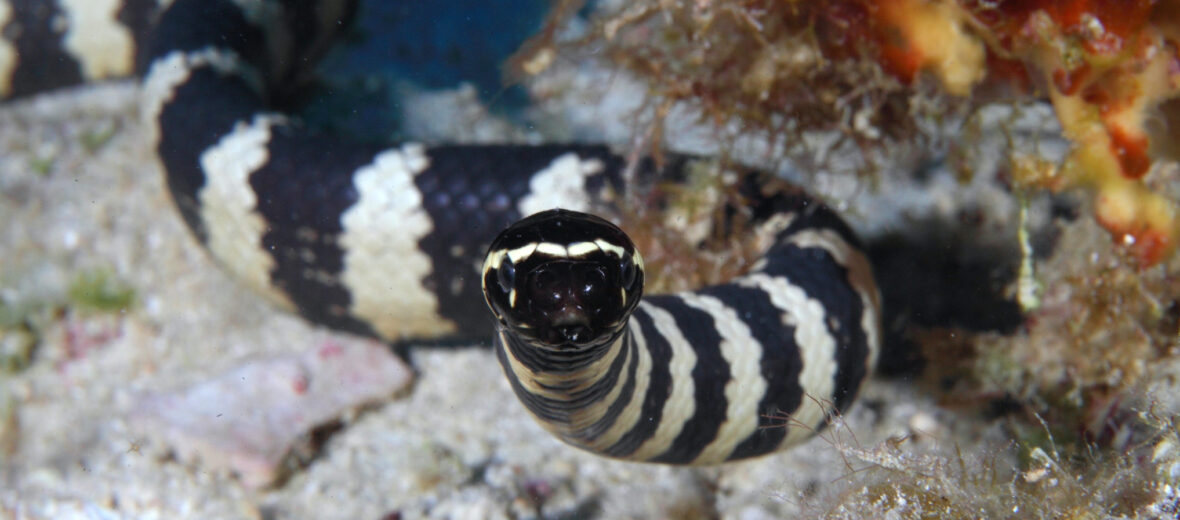
The turtleheaded sea snake, aka egg-eating sea snake, can be found in Oceania near Australia and also some Pacific Islands like the Philippines and the Loyalty Islands of New Caledonia. These sea snakes tend to be sedentary and do not migrate from locale to locale. They prefer shallower waters and dive to only 131+ feet. Even though they face the threats of overfishing (which depletes their food source) and climate change (which causes coral bleaching, habitat degradation, and warmer waters), these snakes are still listed as Least Concern by the IUCN. Their numbers are decreasing though.
First the Stats…
Scientific name: Emydocephalus annulatus
Weight: Up to 3 lbs.
Length: Up to 41 inches
Lifespan: Up to 10 years
Now on to the Facts!
1.) These snakes are so named for their short, blunt head.
2.) They vary in morphology in that some snakes are a solid color, while others are banded with yellow and black or white and block patterning.
3.) The turtleheaded sea snake feeds solely on fish eggs; more specifically the eggs of demersal fish that attach their eggs to the substrate, like blennies, damselfish, and gobies.
4.) For this reason, these snakes possess very small teeth.
5.) Turtleheaded sea snakes tend to have an almost grazing habit of eating. They will feed throughout the day, eating several small meals, rather than feeding on 1 large meal, less frequently.
But wait, there’s more on the turtleheaded sea snake!
6.) The turtle-headed sea snake is a sexually dimorphic species, in that females are markedly larger than males and males tend to have more rugged scales than females.
7.) Algae growth on their scales can have a direct impact on how fast they can swim. Those with a good deal of algae have more of a drag when they swim, and are thus slower that others. The drag can cause up to a 20% speed loss.
Did you know…?
Their coloration affects the amount of algal fouling that accumulates on their body. For instance, a more monotone or solid colored snake will gather more algae on their scales than those with a banded coloration.
8.) The drag factor does not seem to have an effect on the snake’s survival. It just causes the slower snakes to hide more than those without as much, if any, algae growth.
9.) Females lay up to 2 large eggs every 2 years.
10.) The eggs are laid, covered with sand, then left to their own devices.
But wait, there’s still more on the turtleheaded sea snake!
11.) These snakes are venomous, but their venom is a rather mild paralytic that poses no threat to humans. So, if they are threatened, they tend to flee to nearby shelter rather than stay and fight.
12.) Sharks and larger fish sometimes prey on these snakes.
Now a Short Turtleheaded Sea Snake Video!
Be sure to share & comment below! Also, check out the Critter Science YouTube channel. Videos added regularly!
Want to suggest a critter for me to write about? Let me know here.
Some source material acquired from: Wikipedia & IUCN
Photo credit: Klaus Stiefel



